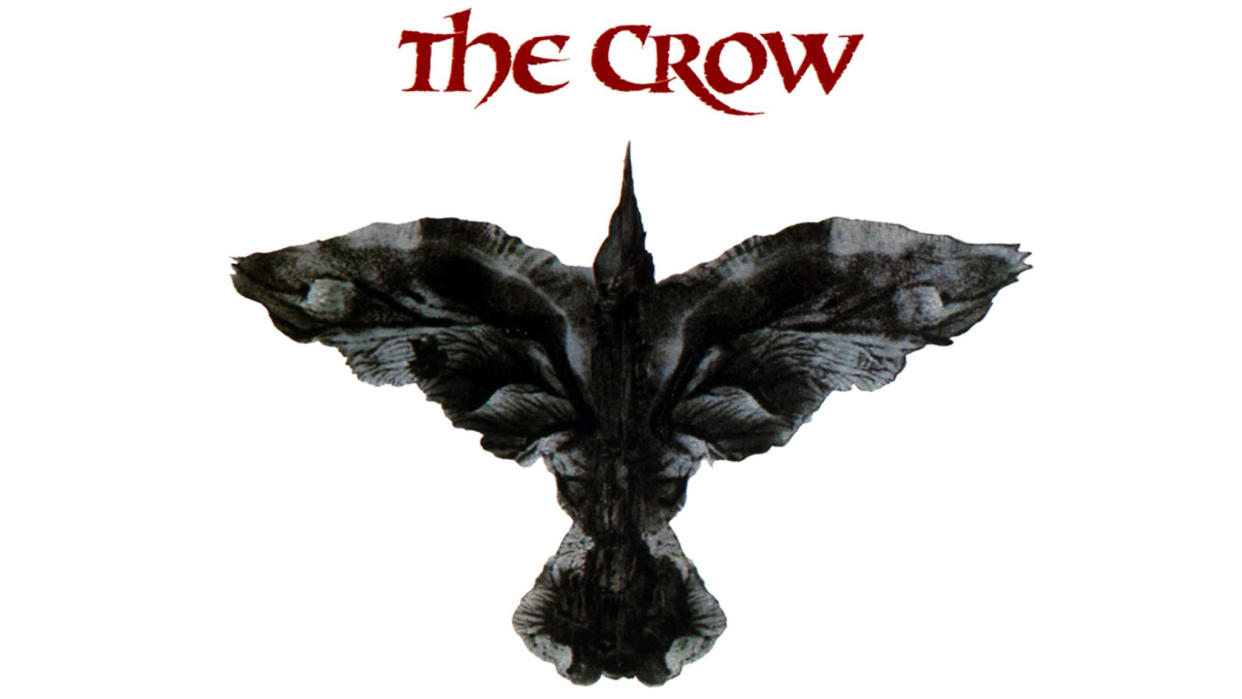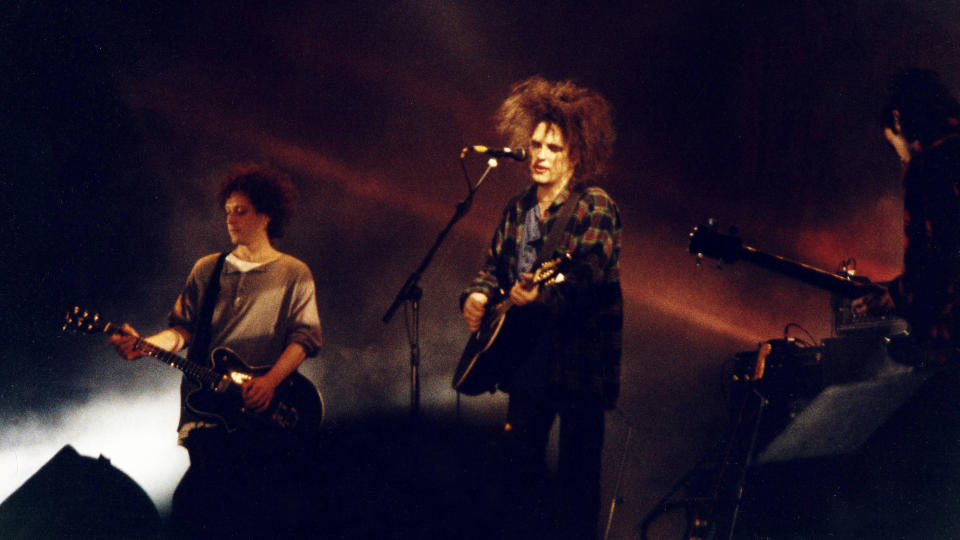Thirty years ago a two-man Cure lineup recorded one of the greatest film soundtrack contributions of all time

- Oops!Something went wrong.Please try again later.
- Oops!Something went wrong.Please try again later.
There are a select batch of film soundtracks from the early '90s that are arguably more famous than the movies themselves to some of us – existing in their own unique space for listeners. The rap/rock crossover contributions of Judgement Night and the Pacific North West time capsule of Singles are two that spring to mind, making hay with the embarrassment of riches that was the alt-rock scene of the time. But another, darker slice of the era can be found in the contributions for 1994's The Crow.
To call the film's 30th anniversary a celebration seems shallow – the shadow cast over its initial release due to the tragic death of its star Brandon Lee during filming will now always drape a cloak of sadness around an already bleak film. But just as revisiting the comic book adaption is a reminder of its poignant and concise meditations on loss, revenge and the relatable figure of the outsider, its soundtrack still holds up. And one song in particular remains its crowning glory.

Eric Draven's return from death to avenge his and his fiance's death is followed by cuts including Nine Inch Nails (Trent Reznor's hugely successful take on Joy Division's Dead Souls), the dark blues anthemics of Stone Temple Pilot's Big Empty and the industrial rush of The Thrill Kill Cult (who also made a cameo in the film). But the song that defines the spirit and themes of The Crow most – and certainly used the most prominently – is The Cure's Burn. But if you think it was recorded by the 'band', you're mistaken. It was more a case of what was left of The Cure at the time.
"I think that was the last thing we did together, the Burn thing," reflected the band's Robert Smith on drummer Boris Williams in a 2008 interview with Philadephia's Radio 104.5. As a parting shot before the former Thompson Twins session drummer's amicable departure from The Cure after four albums in 1994, it's impressive, but all the more remarkable considering he and Smith were the last men standing. Perhaps this is the reason Burn sounds quite the way it does.
It was very much in flux during that whole period
The Cure have had their share of lineup changes over the years; as recently as 2021 longtime bassist and Smith's frequent writing partner Simon Gallup left the fold and then returned again. And in 1993 when The Cure were approached about contributing to the movie soundtrack for a live-action adaption of James O'Barr's graphic novels, he was out of the band again. Even though Smith didn't seem to even realise it at the time.
"It was very much in flux during that whole period," noted Smith in the 2008 interview. "For a brief period Simon left but I didn't realise until afterwards – I just thought I hadn't seen him for a long time. I thought he'd gone away somewhere. Apparently he left the band and came back and said, 'I've changed my mind'. 'I didn't know you'd left anyway!'
"Boris was kind of hovering," continued Smith. 'Pol [now Pearl, Thompson, guitars] had gone and Boris was thinking, 'Should I go?' and I knew his heart wasn't in it."
In this relatively dire situation, The Cure were approached by O'Barr himself to contribute to the film. Smith was already a fan of O'Brien's novella and reportedly the first plan was to contribute their suitably dark and brooding Pornography album track The Hanging Garden to the film as its lyrics had already been used in the graphic novel. But Smith's admiration for the source text meant he wanted to go further and try to create an original song tailored to the forthcoming film.
"I had the idea, and we just recorded it, me and him, in the studio," offered Smith to Radio 104.5 about the situation he and Williams found themselves in.
The track feels like it bridges the band's Disintegration and Pornography eras with a more electronic direction that felt at home with the rising industrial scene at the time, and elsewhere on the Crow soundtrack. The stuttered programming pulsates through the song, driven by a driving Fascination Street-style bassline and lit by Smith's arpeggiated guitar washed in delay and modulation. There's even an unexpected flourish of pennywhistle from Smith in the extended intro and outro to imitate the cry of a crow.
I think Robert's style of playing guitar is unique and I play off that a lot
Interestingly, Williams' tribal-style rhythmic approach on the track feels like it's referencing Lol Tolhurst's claustrophobic beats on The Hanging Garden.
"I think Robert's style of playing guitar is unique and I play off that a lot," Williams reflected on his time in the band in a 2019 interview. "And obviously his vocal style as well."
The duo being isolated as a unit during the creation of Burn meant that the duo's dynamic was intensified. "That's probably why it came together so quickly – I think the whole thing was turned around in two days," remembered Smith. "It was very much like I did the Top album actually. He just sort of jammed the drums and I was playing along."
Thirty years later and the work of those two days resonates on. Robert Smith and the Cure's current (and complete) lineup has frequently returned to the song in their marathon sets in recent years – and yes, their leader plays the penny whistle every time.

